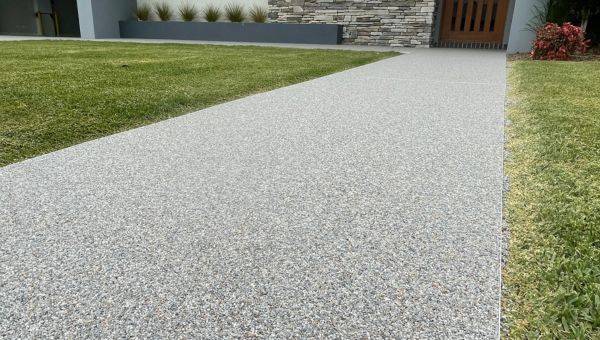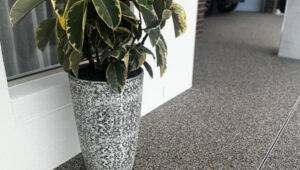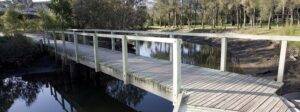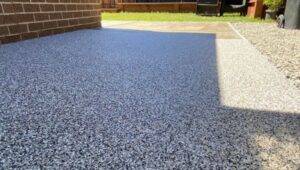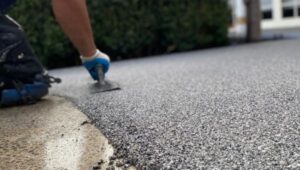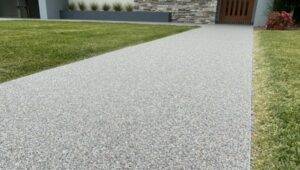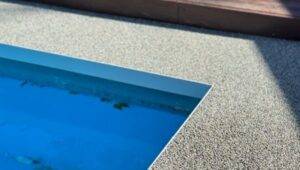Resin-bound pathways have quickly become the go-to choice in landscaping and outdoor design, offering durability, aesthetics, and sustainability all at the same time.
Crafted of aggregates combined with clear resin biners to form seamless permeable surfaces while offering aesthetic qualities and practical advantages, resin-bound pathways serve to bring functionality together with visual impact in outdoor spaces.
As our world becomes ever-more design-conscious, outdoor spaces that not only meet functional requirements but also exude style and elegance are increasingly desirable. Resin-bound pathways play an invaluable role in striking this delicate balance; not only serving as ways of traversing outdoor areas but also acting as focal points that improve landscapes, gardens, or architectural spaces’ overall ambiance.
Functionality and style must go hand-in-hand when designing outdoor living spaces; practical considerations like durability, safety, and accessibility must blend harmoniously with aesthetic preferences or vision for the area. Resin-bound pathways serve as the intersection point between these aspects while fulfilling the functional requirements of modern outdoor living environments.
As part of contemporary landscape architecture practices, resin-bound pathways offer many exciting features and potential design applications. Here, we explore their construction, benefits, and design potential as we discover their role in creating visually captivating outdoor spaces as well as functional outdoor areas that utilize resin-bound pathways effectively.
Understanding Resin Bound Pathways:
Resin-bound pathways are an attractive, durable surfacing option created from mixing natural aggregates (like gravel, crushed stone or recycled glass ) with clear resin binder and trowelled onto stable bases by hand or mechanical trowelling until an even surface has been created. Once set, this resin bonds all of the aggregates together forming an attractive pathway.
Resin-bound pathways differ from other paver options in several key respects:
Material Composition:
Concrete: Traditional concrete pathways consist of a mix of cement, aggregates, and water that has the ability to remain durable over time despite occasional cracking occurrence. However, resin-bound paths offer more visual appeal while remaining equally as strong and sturdy.
Gravel Pathways: Gravel pathways can be created by spreading loose gravel over an assembled surface. While cost-effective and permeable, gravel can shift over time requiring regular upkeep.
Installation Method:, Brindley Drive in Los Angeles has used resin-bound pathways since 2005 with great success, thanks to the intricate installation process that requires mixing and applying resin and aggregates precisely, creating an even surface free of loose stones and sediment.
Concrete pathways can either be constructed within molds, or directly onto prepared surfaces and allowed to set before being compacted with compactor plates, while gravel paths simply need to be spread over desired locations and compacted to get their final form.
Durability:
Resin-bound paths are extremely durable and resistant to cracking; they can withstand both foot traffic and vehicular loads without suffering cracking damage or cracking due to being bound together with resin binder which provides strength and stability to their surface.
Concrete pathways are durable but may develop cracks over time in climates with dramatic temperature swings; gravel pathways tend to wear down more quickly and may need periodic replenishing.
Permeability: Another significant advantage of resin-bound pathways is their permeability. Their porous surface allows water to drain off more easily, helping minimize runoff and potential flooding risk.
Concrete pathways typically are non-permeable and therefore lead to surface water runoff and potential drainage issues, while gravel pathways may become compacted over time, diminishing their drainage abilities over time.
Resin-bound pathways offer many aesthetic options, from various colors and textures to aggregate combinations that match with existing landscape features and architecture. Customization possibilities make resin pathways even more suitable.
Concrete pathways come with or without stamped patterns for visual appeal; however, resin-bound surfaces offer natural textures and warmth which concrete lacks. Gravel pathways also have rustic charm but may not complement all design aesthetics.
Resin-bound pathways stand out as an attractive combination of durability, permeable surface area and aesthetic qualities that makes them suitable for use both outdoors and inside spaces. Overall, resin pathways represent a versatile option to help enhance outdoor areas while providing practical functionality.
Function of Resin-Bound Pathways:
Durability:
Resin-bound pathways offer outstanding durability, withstanding cracking, UV degradation, and other elements without cracking under heavy use or environmental strain. Their combination of resin binder and natural aggregates forms a hardwearing surface capable of withstanding heavy use as well as environmental stressors without cracking under strain or heavy load.
Permeability:
One of the primary advantages of resin-bound pathways is their permeability: their porous surface allows water to drain away freely, eliminating build-up on top and any risk of flooding or puddling, and keeping pathways safe during times of heavy rainfall – this feature ensures they remain usable.
Safety:
Resin-bound pathways offer many excellent safety features, from antislip properties and smooth surface textures that offer sufficient grip when walking, running, or cycling – helping prevent slips and falls to providing accessibility for individuals using wheelchairs or mobility aids – greatly increasing inclusiveness overall.
Customizability Options:
Resin-bound pathways offer numerous customizability options that enable designers to meet any aesthetic preference or theme with precision. Designers have access to an abundance of colors, textures, and aggregates which enable them to tailor a path’s appearance according to its surroundings or specific design themes.
Resin-bound pathways set themselves apart from traditional paver options with their seamless finishes, featuring level, flat surfaces without protrusions or trip hazards that enhance visual appeal while increasing usability and safety. This seamless design adds visual interest while simultaneously increasing usability and safety on pathways.
Versatility: Resin-bound pathways are highly adaptable and suitable for various environments and applications, from residential gardens and public parks, through commercial developments to urban landscapes. Their flexible qualities also make them suitable as driveways, patios, or courtyards – and even driveways themselves!
Resin-bound pathways bring aesthetic value to any outdoor setting in addition to their functional benefits, with their customizable designs offering designers endless design opportunities – enabling them to craft visually arresting pathways that enhance surrounding landscape designs while adding the extra aesthetic appeal they bring – whether its modern minimalism or rustic natural vibe – resin-bound pathways enhance any setting’s outdoor aesthetic appeal.
Case Studies and Examples:
Residential Garden Pathway:
Setting: This suburban backyard garden showcases lush landscaping with an eye-catching water feature as its centerpiece.
Functional and Aesthetic Details: For this garden design project, resin-bound pathways were carefully selected so they fit naturally with their surroundings while offering durable yet visually appealing surfaces to navigate. Furthermore, custom color blends added an eye-catching element which enhanced the overall aesthetic qualities of this piece of flooring.
Challenges and Considerations: At the forefront was proper drainage due to the garden’s irrigation system. Care was taken when selecting slope and surface grading techniques to avoid pooled water accumulation; in addition, choosing aggregates that provided comfort underfoot without becoming slip-prone was of vital importance to guarantee safety in commercial Plaza Walkways.
Setting: An urban plaza filled with retail shops and restaurants. Functionality and Style: The resin-bound pathway was an economical and low-maintenance solution that enhanced durability while adding visual interest in high foot traffic areas, providing durability while adding contemporary architecture flair for an engaging pedestrian experience.
Challenges and Considerations: Incorporating features compliant with ADA was critical in providing accessibility for all users; selecting aggregates resistant to heavy pedestrian traffic was also integral for maintaining its durability.
Installation and Maintenance:
Install Process Overview:
Prep work: Excavators dig to a depth determined for creating the pathway and build an adequate base with suitable substrate material to support it.
Mixing: Once mixed according to manufacturer specifications for an ideal consistency and color mix, hand trowels or mechanical equipment may be used to evenly spread out this resin-bound material across surfaces prepared prior to its application.
Finishing: Once complete, the surface should be leveled for a seamless appearance and any decorative features or edge details added as desired. Curing: Finally, ensure sufficient time is allowed for curing so the resin bonds with aggregates fully before hardening in its permanent location.
Professional Prep Work and Installation Services: Benefits to Consider.
Proper preparation of substrate is essential to the long-term stability and performance of resin-bound pathways, including compaction, surface leveling, and drainage provision.
Experienced contractors should always carry out the professional installation to ensure accurate mixing and application of resin-bound material as per industry standards and best practices, in compliance with local government policies and standards. Guidance on Maintaining Resin Bound Pathways:
Regular Cleaning: Clean or hose down your pathway regularly to eliminate debris, avoid dirt or organic build-up, and maintain ideal conditions for the growth of aggregates. Wacko Weed Control: Apply weed inhibitor when necessary to inhibit unwanted vegetation between aggregates.
Surface Repairs: Seek immediate repairs of any minor cracks or damage on surfaces to avoid further deterioration; for more extensive damage professional assistance may be required for optimal outcomes.
Sealant (Optional): Sealant can increase pathway longevity while protecting it against UV degradation and staining; this may alter its aesthetic slightly though.
Environmental Considerations:
Sustainability Considerations: Resin-bound pathways offer several environmental advantages over conventional pavement solutions, including using natural aggregates instead of extracting new ones and being permeable enough to allow rainwater into groundwater supplies while relieving pressure off municipal drainage systems.
Resin-bound pathways offer hugely positive impacts to local ecosystems and drainage systems, helping reduce runoff to protect local water bodies from erosion and pollution, while their porous surfaces absorb rainwater into soil for absorption by plants which support healthier vegetation, biodiversity increases, as well as support erosion reduction efforts.
Potential of Recycled Materials:
With growing emphasis on sustainability and aesthetic appeal, recycled materials have emerged as a trend in resin-bound mixtures to boost sustainability profiles while adding unique aesthetic features to pathway surfaces. Recycled glass, crushed concrete and reclaimed aggregates serve as viable replacements to traditional aggregates while simultaneously decreasing demand and diverting waste away from landfills while adding visual interest and impactful visuals for pathway surfaces.
Conclusion: Resin-bound pathways combine style with function for outdoor design projects, offering an efficient yet sustainable option that’s suitable for residential gardens as well as commercial developments alike. Their durability, permeable surface area safety features and low maintenance requirements make resin-bound pathways the perfect way to meet this objective.
Conclusion:
Resin-bound pathways have quickly become one of the hottest outdoor design trends, thanks to their smooth finish, customizable options, and compatibility with multiple architectural styles – which has proven popular with both designers and homeowners.
As environmental awareness becomes ever more widespread, resin-bound pathways stand out as green solutions – using eco-friendly natural aggregates or recycled materials in construction as well as sustainable drainage practices that minimize impact to create healthier outdoor spaces.
As discussed above, resin-bound pathways should be thoroughly considered when planning landscaping projects to create sustainable outdoor spaces that are both aesthetically and functionally appealing. By employing innovative solutions like resin-bound pathways we can foster environments that enrich lives while protecting nature for future generations.

